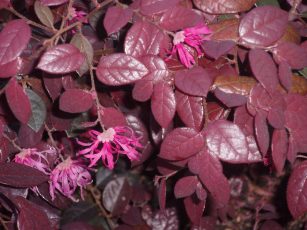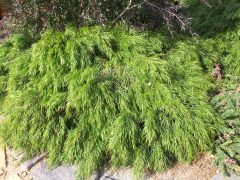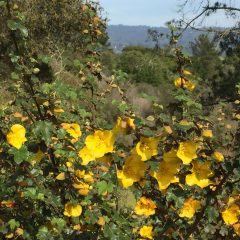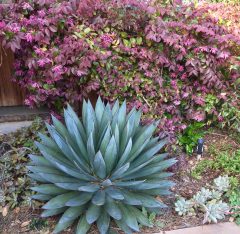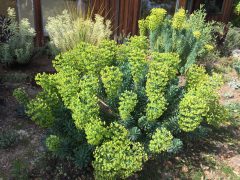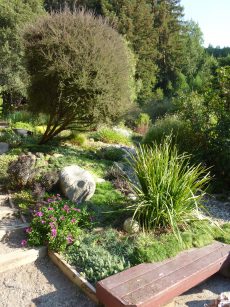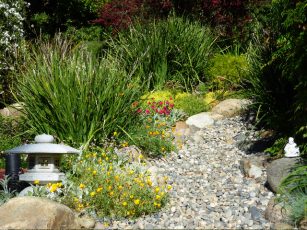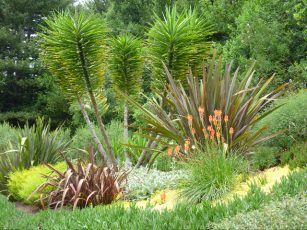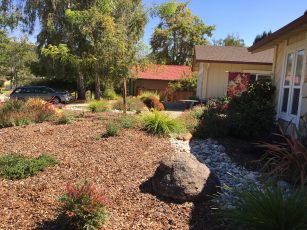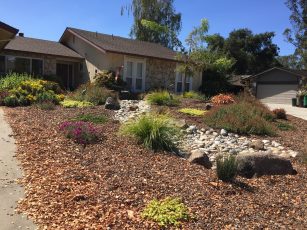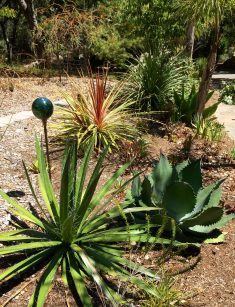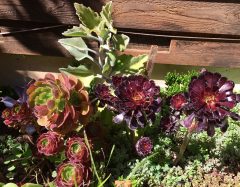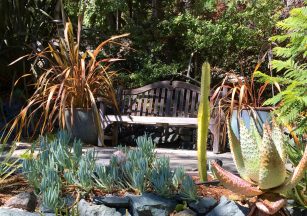All plants need water– even those that are tolerant of our summer dry conditions. Water makes up 90-98% of every plant we grow. It’s needed for photosynthesis, as well as reproduction and defense against pests.
What happens to a plant when the thermometer tops 100 degrees? Are there some plants that can survive tough times more easily?
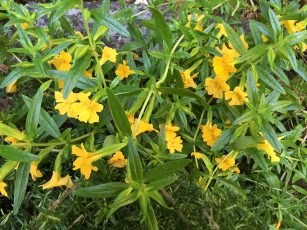
Photosynthesis is one of the most remarkable biochemical processes on earth and allows plants to use sunlight to make food from water and carbon dioxide. At temperatures about 104 degrees, however, the enzymes that carry out photosynthesis lose their shape and functionality. A garden that provides optimum light and water but gets too hot will be less vigorous. Tomatoes, for example, will drop blossoms and not set fruit if temperatures are over 90 degrees. Plants that do endure hight heat may be stunted and weakened attracting pests and diseases even if water is available.
Plants have natural systems that respond to heat problems. Plants can cool themselves by pumping water out through the leaves for a kind of swamp cooler effect. They can also make ?heat-shock? proteins which reduces problems from over heating. All these strategies can take resources away from a plants other needs like growth, flowering and fruiting.
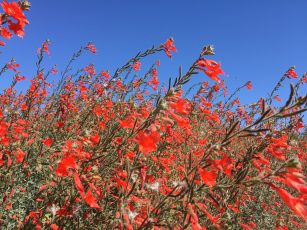
It?s no surprise that many California natives are adapted to high temperatures. Some California native plants that can handle the heat with little water include salvia, mimulus, California fuchsia, eriogonum, manzanita, artemisia, California milkweed, ceanothus, mountain mahogany, bush poppy, bush lupine, native penstemon, monardella, mahonia nevinii, fremontodendron and holly-leafed cherry.
Other well adapted plants that are known to be more tolerant of heat include butterfly bush, germander, rosemary, smoke tree, rudbeckia, coreopsis, lantana, plumbago, gaillardia, lilac, sedums, oregano and verbena.
So how much water do different types of plants need during the heat of summer?
Be sure that you water trees and shrubs deeply checking soil moisture first with a trowel. Established small to medium shrubs should be watered when the top 3-6″ is dry, large shrubs and trees when the top 6-12″ is dry.
As a rule of thumb, trees and large shrubs need deep but infrequent irrigation. They should be on a separate valve than your smaller shrubs and perennials. Water ornamental trees 1-3 times per month depending on the type and soil. Tree roots grow 12-36? deep and require 10 gallons of water per inch of trunk diameter.
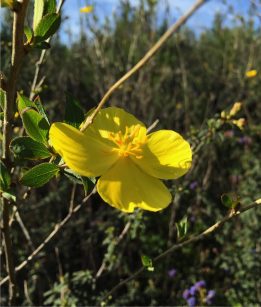
Apply water with a soaker hose, drip system emitters or hand held hose with shut off and soft spray attachment according to your water district?s restrictions. Don?t dig holes in the ground in an effort to water deeply. This dries out roots even more. Be sure to water the root zone to the indicated root depth every time you water. Watering deeper than the root zone only means you are wasting water. You can test how deep you watered by pushing a smooth rod that?s 1/4 inch – 3/8 inch in diameter into the ground soon after you irrigate. The soil probe should easily slide through the wet soil but become difficult to push when reaching dry soil.
The roots of smaller shrubs are 12-24? deep in the soil. Established native shrubs may need only monthly waterings to keep them looking their best while other shrubs may need watering every 7-10 days during the heat of the summer. Perennial roots only go down 12? or so and may need watering once or twice a week depending on type.
With lots of mulch and the above watering tips you can keep all your plants happy and healthy

